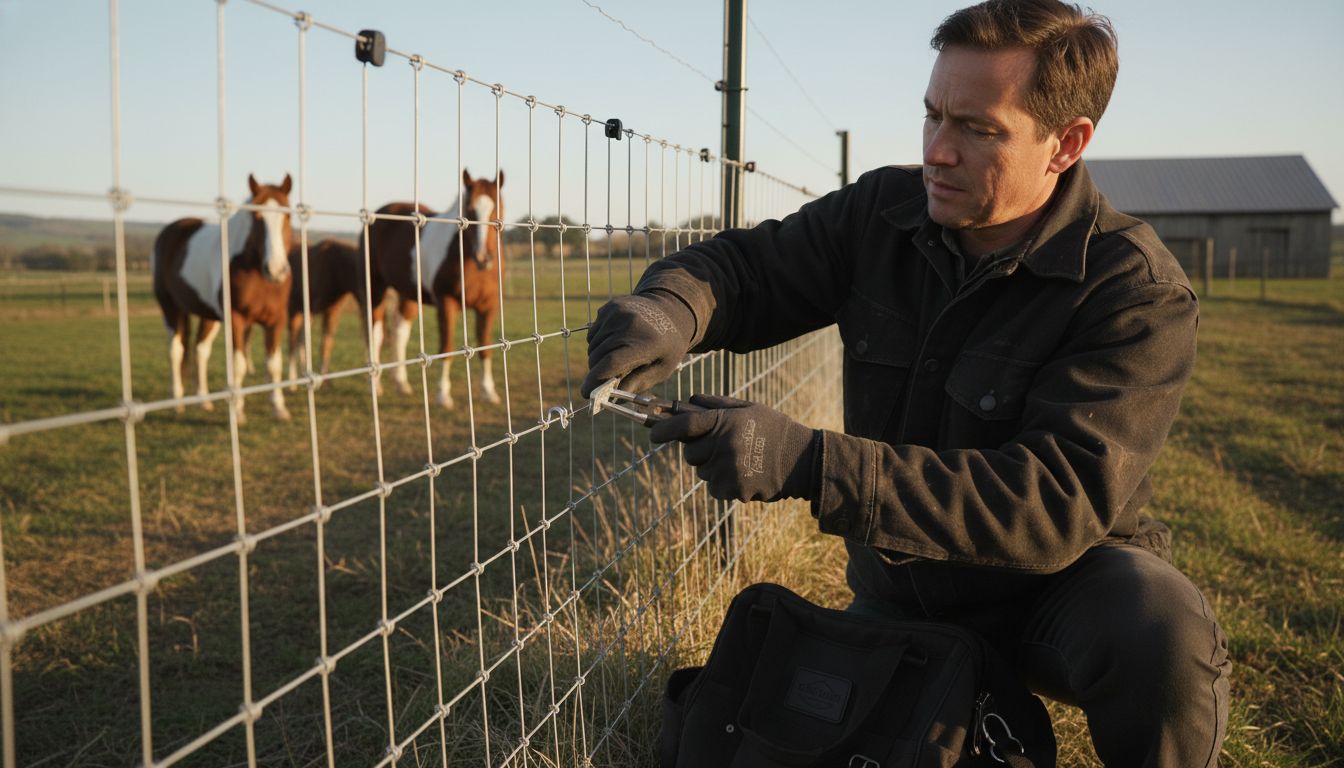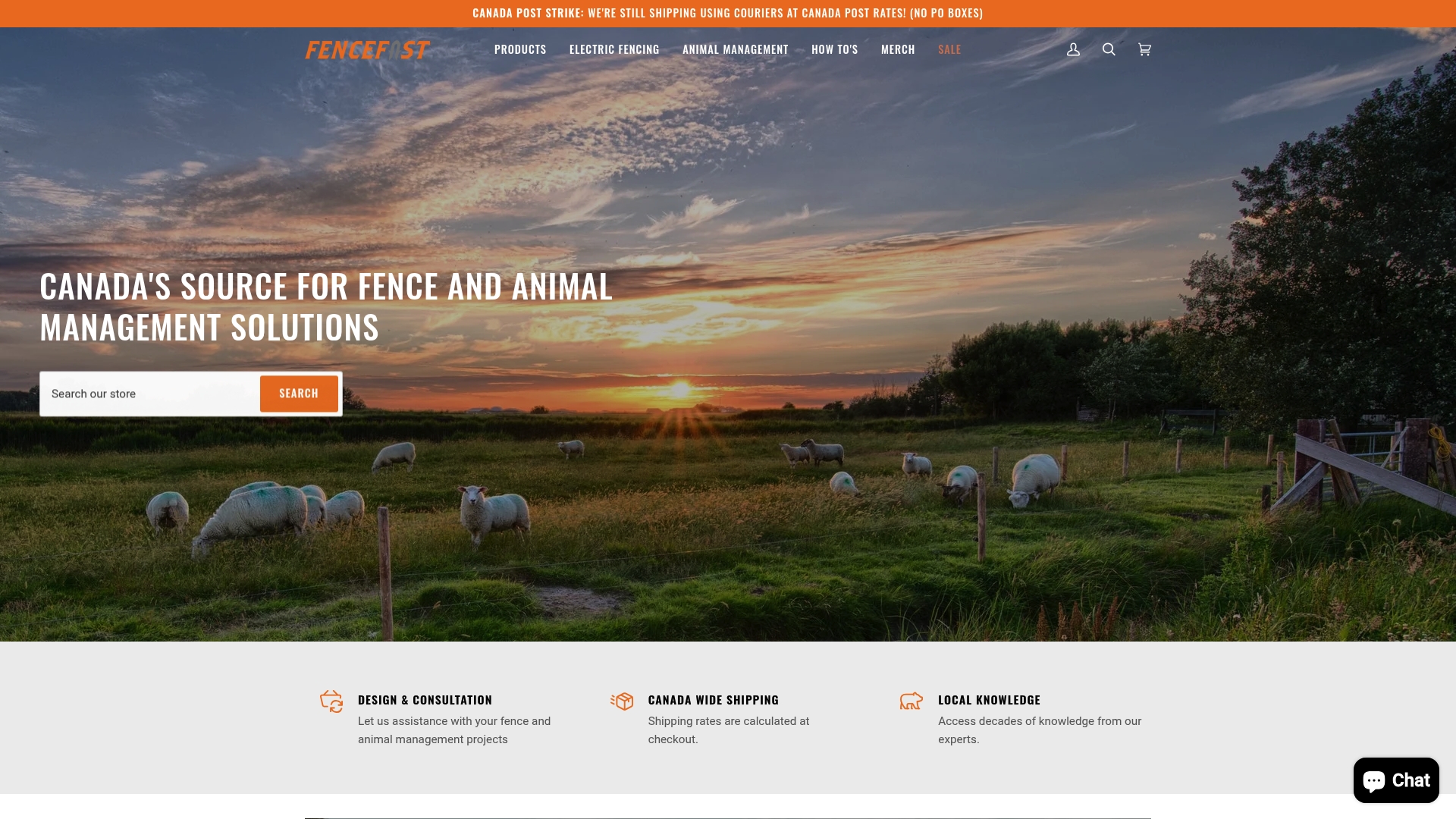Barbed wire fences are responsible for over 60 percent of horse-related fence injuries each year. Creating a safe pasture requires more than just a sturdy barrier. The right wire fencing can be the difference between daily peace of mind and an emergency vet visit. Understanding the materials and designs that protect your horses helps you avoid costly accidents and keeps your animals secure, healthy, and comfortable on your property.
Table of Contents
- Defining Safe Wire Horse Fencing
- Comparing Wire Fence Types
- Visibility And Injury Prevention
- Installation And Maintenance Practices
- Risks And Liability Considerations
Key Takeaways
| Point | Details |
|---|---|
| Safety Features | Effective horse fencing must be visible, flexible, and free of sharp edges to prevent injuries. |
| Fence Types | High-tensile polymer and mesh wire fences provide strong, secure enclosures with minimal risk of entanglement. |
| Installation and Maintenance | Regular inspections and proper installation are crucial for preventing injuries and ensuring fence durability. |
| Liability Risks | Inadequately maintained fences pose significant legal risks, including potential veterinary costs and liability claims for injuries. |
Defining Safe Wire Horse Fencing
Horse fencing requires strategic design and materials to protect these powerful animals from potential injury. According to University of Georgia Field Report, safe wire horse fencing involves specialized materials that combine strength, flexibility, and visibility to create secure enclosures for horses.
A safe wire fence for horses should incorporate several critical characteristics. As research from the University of Minnesota Extension highlights, these fences must be highly visible, strong enough to withstand a horse’s impact, and flexible enough to prevent serious injury. Key safety features include:
- Absence of sharp edges or protruding elements
- High visibility materials
- Flexibility that prevents serious injury
- Durability to withstand horse interactions
Two primary safe wire fencing options emerge for horse owners. High-tensile polymer fences combine vinyl plastic with steel wires, offering an excellent balance of strength and visibility. Mesh wire fences, such as diamond or square knot designs, provide additional safety by preventing hoof entanglement and creating a robust barrier. These options ensure horses remain secure without compromising their potential to see and interact with their environment.
When selecting wire fencing, horse owners should prioritize materials that balance physical protection with animal welfare. Safe Fence Electric System: Complete Guide can provide additional insights into creating comprehensive livestock enclosures that keep animals both secure and comfortable.
Comparing Wire Fence Types
Horse owners have multiple wire fencing options, each with unique characteristics that impact safety and functionality. According to the Field Report, high-tensile polymer fences and mesh wire configurations offer distinct advantages for creating secure horse enclosures.
Wire fence types vary significantly in design and performance. Research from Horse Journals reveals several critical options for horse owners:
-
No-Climb Wire Fences
- Rigid yet flexible structure
- Low maintenance requirements
- Excellent injury prevention
-
V-Mesh Wire Fences
- Linear strength design
- Springy protective texture
- Higher cost compared to alternatives
-
High-Tensile Polymer Fences
- Strong and visible materials
- Requires periodic wire tightening
- Combines vinyl plastic with steel wires
Each wire fence type presents unique benefits for horse management.
No-climb and V-mesh designs prioritize animal safety through flexible structures that minimize potential injury risks.
 7 Essential Types of Livestock Fencing You Need can provide additional context for selecting the most appropriate wire fencing solution for your specific horse management needs.
7 Essential Types of Livestock Fencing You Need can provide additional context for selecting the most appropriate wire fencing solution for your specific horse management needs.
Visibility And Injury Prevention
Horse fencing requires more than simple boundary creation. Visibility and safety are critical components that directly impact equine well-being. According to University of Minnesota Extension, fences must be solid enough to repel a running horse while remaining flexible enough to prevent potential injuries.
The primary goals of visibility and injury prevention in horse fencing include:
- Creating clear visual boundaries
- Minimizing potential impact points
- Preventing accidental entanglement
- Reducing risk of horse panic or injury
Research from Horse Journals highlights that wire mesh fences with small wire spacing are particularly effective for injury prevention. These designs offer exceptional security by creating tight, consistent barriers that discourage horses from pushing through or becoming caught between wires.
Horses are powerful animals with unpredictable movement patterns. Selecting fencing that provides clear visual cues while maintaining structural integrity is paramount. 10 Tips for Choosing the Best Livestock Fence can offer additional insights into creating safe, reliable horse enclosures that protect both the animal and the property.
Installation And Maintenance Practices
Installing and maintaining horse fencing requires meticulous attention to detail and consistent monitoring. According to the University of Minnesota Extension, proper installation is crucial to preventing potential injuries and ensuring long-term fence durability.
Maintenance best practices for horse wire fencing include several critical steps:
- Conduct regular visual inspections
- Check wire tension periodically
- Remove any protruding or damaged wire segments
- Ensure consistent fence height and alignment
- Clean and treat wire surfaces to prevent rust
Research from the Field Report emphasizes that high-tensile polymer fences require periodic tightening to maintain optimal tension. Mesh wire fences demand careful inspection to eliminate any exposed sharp wire ends that could potentially harm horses. Proactive maintenance not only extends fence life but also significantly reduces the risk of equine injuries.

Understanding the nuanced requirements of different wire fence types is essential for effective management. 10 Essential Tips for Choosing the Best Cow Fence can provide additional insights into comprehensive fencing maintenance strategies that can be adapted for horse enclosures.
Risks And Liability Considerations
Horse fencing liability extends far beyond simple property management. According to the University of Minnesota Extension, improperly installed or maintained fences can create significant legal and financial risks for property owners, potentially leading to substantial financial damages if horses are injured.
Key liability risks in horse fencing include:
- Potential veterinary costs from fence-related injuries
- Legal responsibility for horse medical treatments
- Property damage from horse escape incidents
- Potential personal injury claims
- Financial exposure from negligent fence maintenance
Research from the Field Report specifically warns against using barbed wire, which can dramatically increase liability risks. Hazardous fencing materials like barbed wire can lead to serious horse injuries, making property owners directly responsible for any resulting medical complications or animal suffering.
Mitigating these risks requires proactive fence design and consistent maintenance. 10 Tips for Choosing the Best Livestock Fence can provide additional strategies for creating safer, more legally defensible horse enclosures that protect both animals and property owners.
Build Stronger, Safer Wire Fences for Your Horses Today
Creating a secure horse enclosure that balances visibility, durability, and injury prevention can feel overwhelming. The challenge lies in finding fencing solutions that combine strength without sharp edges, flexibility to reduce impact injuries, and high visibility to keep your horses safe and calm. FenceFast.ca understands these critical concerns and offers a wide range of fencing components and electric fencing systems designed specifically for horse safety and management.

Take control of your fencing project now with expert products that meet the unique needs outlined in the complete guide on safe wire fencing for horses. Explore our carefully curated selection of wire, connectors, and maintenance supplies to ensure your fence stands the test of time and keeps your horses protected. Visit FenceFast.ca for reliable livestock fencing solutions and discover practical insights like Safe Fence Electric System Guide and 7 Essential Types of Livestock Fencing You Need to help you make confident decisions. Don’t wait until problems arise. Strengthen your fence and safeguard your horses starting today.
Frequently Asked Questions
What are the key characteristics of safe wire horse fencing?
Safe wire horse fencing should be highly visible, strong enough to withstand a horse’s impact, flexible to prevent serious injuries, and durable enough to endure horse interactions. It should also lack sharp edges or protruding elements.
What types of wire fences are recommended for horses?
The two primary recommended types are high-tensile polymer fences, which combine vinyl plastic with steel wires for strength and visibility, and mesh wire fences, like no-climb and V-mesh designs, which help prevent hoof entanglement and increase safety.
How important is visibility in horse fencing?
Visibility is crucial in horse fencing as it creates clear visual boundaries for the horse, minimizes potential impact points, and reduces the risk of accidental entanglement or panic, thus enhancing safety.
What maintenance practices should I follow for horse wire fencing?
Regular maintenance practices include conducting visual inspections, checking wire tension periodically, removing damaged wire segments, ensuring consistent fence height, and treating wire surfaces to prevent rust. High-tensile polymer fences need tightening over time to maintain optimal tension.
